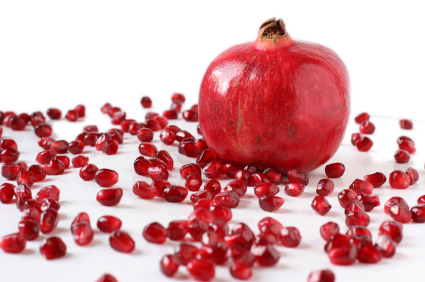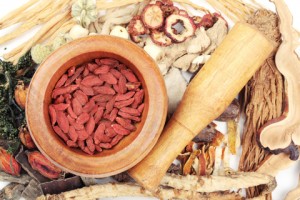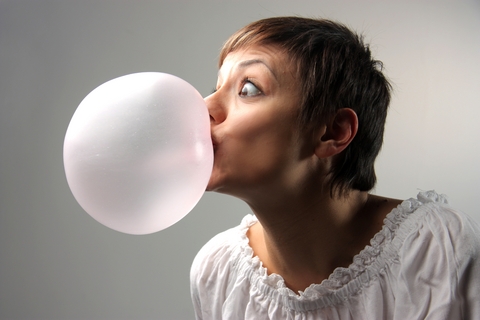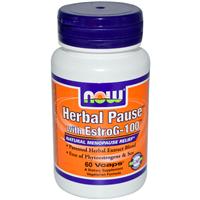Pomegranate seed oil and hot flashes
Let us go early to the vineyards to see, if the pomegranates are in bloom… Songs of Solomon 7:12
Pomegranates have had a place in the bible and many religions for centuries. A shrub fruit native to the Middle East, the pomegranate is valued in culinary and in complementary and folk medicine circles. As a fruit, there is none so tempting and tantalizing as the pomegranate – its seeds, both sweet and tart, are challenging to obtain and sensual in appearance.
Pomegranate seed oil is a rich source of phytoestrogens, plant-like compounds with estrogen properties that may influence estrogen receptors and modulators in the body. Its main components include linolenic acid (an unsaturated fatty acid that is in the omega-3 family), punicic acid (a conjugated polyunsaturated acid) and ellagic acid (an antioxidant found in many fruits and vegetables). Studies in mice suggest that pomegranate oil may be helpful in lowering blood pressure, counteracting insulin resistance and preventing prostate, colon, lung and breast cancer. Because of its estrogenic properties, it may also be useful for menopausal symptoms. Or not.
A study that appears in the online version of Menopause explores the value of pomegranate seed oil for hot flashes in 81 women. Over a 12 week period, these women received either capsules, twice daily, that contained 30 mg pomegranate seed oil or placebo capsules containing sunflower oil. All women participating in the study were in menopause for at least a year and reported having at least five hot flashes a day. None had taken hormone therapy within 3 months of starting the study, which of course, could affect results.
Women taking pomegranate oil experienced significant benefits, reducing the mean number of hot flashes by 4.3 a day. However, women taking placebo also reported significant reductions in hot flashes by as much as 2.5 per day. After 12 weeks, the pomegranate oil group had a reduction in hot flash frequency by as much as 38.7% compared to the placebo group, who had reductions by as much as 15.6%. Based on these numbers, it would appear that pomegranate seed oil was indeed, significantly more effective than placebo, right? However, the researchers say that the total reduction in the frequency of hot flashes was no different between women taking pomegranate oil and those taking placebo. At the same time? When they tracked the women past this time period (up to 24 weeks), they found that the differences remained, suggesting that the effects of pomegranate oil may be sustainable and even take a longer treatment time to reach its full effect. This warrants looking into its potential with larger studies of longer duration.
One thing to mention is that it did appear that pomegranate seed oil also benefited other symptoms, in particular sleeping disorders, which is in line with other studies looking at isoflavones. And, no side effects or serious adverse events were reported.
So does it or doesn’t it? Undoubtedly, the placebo effect plays a role in all clinical studies, whether or not they are focused on pharmaceutical treatments or complementary therapies. Other studies of phytoestrogens have shown mixed results and a small number have met the criteria for scientific design. Still, there is a question about the role that time plays; many herbal medicines are well known to take some time before reaching full potency in the body in order to exert any sort of intended effect.
I say that the verdict on pomegranate seed oil isn’t in yet. It’s not the panacea we’d like to see but it also isn’t a flat out failure.
Meanwhile, I love that I once heard chef Jose Andres suggest that the best way to access its seeds is to pat it like a baby’s bottom.
Stay tuned for more news on this jewel of the fruit world.
Read More
Newsflash: black cohosh – one of these is not like the other
Love the first line of this editorial:
“Black cohosh preparations are not all the same.”
That is,
“Vigilance must be exercised when interpreting data.”
In other words, sometimes it appears that black cohosh is a significant and real alternative to hormones for battling hot flashes and even some other menopausal symptoms. And other times, it appears that it’s not. The reason? Product variability and dosage.
A bit of geek: you may recall that black cohosh is an herb from the buttercup family. Its scientific name is Cimicifuga racemosa. But, there are many different types (or species) of Cimicifuga and researchers say that when the continents split, these plants took different directions and ended up with distinct chemical compositions. Moreover, when they analyzed the products for certain active components, they found significant variability.
Add this to the fact that researchers studying black cohosh have used dosages ranging from 2.8 mg to 160 mg, and that these formulations were pure or were what they call “multibotanicals” (i.e. containing other herbs believed to be effective to qualm flashes and mood swings) and well, you have a veritable melting pot of clinical crap that defies logic. Add in a dash of more scientific geekdom know as a bell shaped response, in which low doses of a drug may be ineffective, moderate doses are effective and at higher doses, benefits disappear again, and well, it’s almost impossible to draw any firm conclusions.
Wow. Pretty scary, right?
The Menopause Industrial Complex will have you believe that the only effective preparations for ‘treating’ the disease they call menopause are pharmacological preparations manufactured by a large company and that has undergone rigorous, controlled scientific analysis. A lot of Western practitioners will have you believe that not only have herbs not be rigorously tested and studied under the same scientific conditions, but that they are downright ineffective and sometimes downright dangerous.
Guess what?
Both camps are incorrect. Because when you peruse the archives of the National Library of Medicine or esteemed journals like Maturitas or Menopause, you will find scientifically controlled evaluations of herbs. And, when researchers take the time to tease out data rather than drawing automatic conclusions (as the authors did in the piece I am referring to, which was published online in Maturitas at the end of December), they find that perhaps, the herbs are more effective than believed and that there are reasons for disparate results.
So, black cohosh, yay or nay?
Let’s get back to the original thought:
Black cohosh preparations are not all the same.
For me, a standardized extract that has undergone rigorous clinical study – Remifemin – works wonders. And I hear that it does for a lot of women. But not all women are the same either.
Two words.
Be vigilant.
Five more:
Don’t believe everything you read.
Happy New Year. Let’s approach this year as the year for opening our eyes and taking back our aging process.
Menopause? It’s not a disease and symptoms can be effectively and safely ameliorated with certain herbs. Just. Be. Vigilant.
Read More
Hot flashes, Traditional Chinese Medicine & JQF – it is time for an Rx change?
I am a huge fan of Traditional Chinese Medicine (TCM), having used various preparations over the past 20 years for numerous ailments. These preparations have been prescribed by a practitioner who is licensed and degreed in TCM and my experience, albeit anecdotal, has been nothing but positive. In fact, I have been using a TCM formulation for several years now to help battle numerous symptoms and in combination with other prescribed herbs, I’ve mostly won. That’s one of the main reasons that I am always intrigued when I stumble upon well-designed studies that demonstrate benefit, like this one in the journal Menopause.
A bit of context
TCM and other similar philosophies emphasizes various body systems that together, form a network or grid connected by a meridien, if you will, as well as the relationship of the body to its social and natural environment. Its primary focus on maintaining health and enhancing the body’s ability to fight off disease. TCM will not focus, for example, on treating specific pathogens but rather, on addressing non-specific factors that create disturbances or imbalances within a certain network. TCM also examines how these imbalances may occur in unique parts of a specific system, such as the heart and blood vessels and small intestine (all of which are part of the heart system) and how they change over time. Western medicine, on the other hand, focuses primarily on treating morbidities, or symptoms related to various conditions and diseases. You can read morerabout TCM in this post from last September.
In TCM, menopausal symptoms are believed to be related to a decline in yin or yang in the kidneys. One of the oldest prescriptions in TCM to reinforce kidney energy is known as ‘Qing E Fang’ (QEF) and the first record of its use dates back to the year 960. The preparation is a combination of four key ingredients that are mediated through estrogen receptors and expression, hence, its potential usefulness in menopause. (These ingredients, in case you are interested, are Cortex Eucommiae (whose bark and leaf have an antioxidant effect) Fructus Psoraleae (commonly used for bone health and to treat estrogen associated diseases), Semen Juglandis and Rhizoma Garlic.)
About the research
For this study, researchers used a formulation based on QEF known as Jiawei Qing’s Fang or, JQF, which used two of the four herbs (Cortex Eucommiae, Fructus Psoraleae) mentioned above. In JQF, they are combined with the herb, Salviae Miltiorrhizae, that has been used specifically to treat gynecological disorders and has properties that are similar to SERMs, drugs that mimic estrogen but are theoretically safer. The 72 women participating in the study were all perimenopausal and had severe and frequent hot flashes; they were randomly instructed to take JQF or placebo daily over 8 weeks. For a month thereafter, symptoms were evaluated using a menopause measure that looks at vasomotor, physical, psychosocial and sexual health). The women also kept daily diaries to record the frequency and severity of their flashes.
Notably, this is one of the first times that perimenopausal women have been the focus of a study that involves TCM. Moreover, in this study, researchers selected a formulation that worked on the kidney and also contained an herb that not only mimics SERMS but also improves blood circulation. And the findings? Women who randomly took JQF not only experienced significant improvements in their hot flashes, but also reported improvements in quality of life in terms of the impact of vasomotor and physical symptoms. Moreover, because Salviae Miltiorrhizae works on blood circulation, they also had reductions in the blood fats (triglyerides) which means that the formulation might also be beneficial in terms of heart disease prevention in menopausal women.
Is it time for a change of Rx for the change? Should you be seeking out a practitioner who can prescribe JQF and advise you on its best use for you? Or is it too early? JQF was well tolerated, although two women were found to have liver measures negatively affected in ways that did not require any medical intervention but did raise a few red flags and calls for more study. JQF represents a seemingly scientifically proven alternatives to hormone therapy. It’s refreshing to watch TCM come out of Asia and be increasingly incorporated into Western philosophy.
Wednesday Bubble: Warn me
This week’s Bubble is straight out of the buyer beware files. Introducing Warmi ‘Better Menopause Relief.’
Warmi, according to the manufacturer website, is “a unique vegetable and fruit extract supplement. It contains 85% organic ingredients in a vegetable capsule and is 100% Vegetarian.” Moreover, Warmi provides safe, natural, full spectrum menopause relief” meaning that in a single study of 122 women, Warmi “also enhanced hormonal balance, mood, cardiovascular and bone health, vaginal dryness and intercourse discomfort — even overall quality of life. Many benefits were noted in just 30 days.”
Evidently, Warmi delivers, all that and more.
How, you ask?
Warmi’s active ingredients are:
- Gluocosinates, plant chemicals that are found in cruciferous vegetables such as cabbage, which are believed to help fight cancer and possibly, promote heart health.
- Beta-sitosterol, a substance found in plants and suggested to have properties similar to cholesterol. It is used in some European countries for benign prostatic hyperplasia (enlarged prostate) and according to the Warmi website, has been shown in laboratory animals to have some sort of weak estrogen effect that “may benefit the reproductive system.”
- Hesperidin, a flavonoid found in citrus fruits which has shown promise in laboratory animals to potentially reduce blood pressure and cholesterol and work as an anti inflammatory and produce pain killing effects. The Warmi website says that it may also ‘help bone metabolism.’ Note that this claim is based on one study done in mice, which demonstrated a decline in the loss of bone density.
So, Warmi is made up of cancer and heart protective ingredients, may alleviate pain, and…helps with menopausal symptoms? But how does it work? In the FAQ section of the product website, it says that while “The exact mechanism of Warmi is not fully understood but is believed to be associated with certain estrogen receptors.”
I’m sorry…WHAT?!
All I can think of when I think ‘Warmi’ is “warn me.” Yes, warn me that medical and scientific claims without substantiation are to be questioned, that comparisons to existing alternative strategies are difficult without well-designed research, and that unpublished, unreviewed product data are just that: unpublished, unreviewed and non-vetted.
Forewarned is forearmed.
Enough said.
Read More
Wednesday Bubble: More on maca – not ready for prime time
Remember maca? The aphrodisiac of the Andean plains that is even used in fjords of Norway? When it comes to menopausal symptoms and female hormonal balance, it seems that maca is not all it’s cracked up to be. In fact, before you spend your hard earned dollars on this Andean wonderherb, you may want to hear more.
In case you are unfamiliar with maca, it is a plant indigenous to South American countries that has been used for centuries by Peruvians and other cultures to manage conditions such as anemia, infertility and as mentioned, hormonal imbalances in women. More recently, it’s been introduced in Europe, the US and Asia as a potential treatment for impaired sexual function and desire.
However, despite its touted benefits and burgeoning marketing buzz, maca may not be “all that.”
In the scientific world, researchers often look at published studies and data in composite in order to evaluate the effectiveness or worthiness, if you will, of a product or strategy. These efforts are call meta-analysis, and consist of culling, pooling and then evaluating information that was collected over certain time periods. Importantly, when they tried to do this with maca, searching 17 international databases for studies up to June of this year, they discovered the evidence was lacking, forcing them to synthesize or qualitate what they were able to find based on the strength of the evidence that did exist. In summary:
- Out of 17 scientifically rigorous studies that they were able to locate, only four held up to standards and therefore, worthy of inclusion.
- In total, 202 healthy pre- or post-menopausal women took pre-gelatinized or dried commercial maca or placebo, in different doses (1.0 to 3.5 gram daily) for up to 2 months.
- Various menopausal symptoms were studied using scientific indices. They ranged from vasomotor and mental health to sexual dysfunction and overall wellbeing.
Although three of the four studies showed that maca had positive and even significant effects on menopausal symptoms compared to placebo, the researchers emphasize that “perhaps the most important finding of this systematic review is that there have been very few rigorous trials examining the effects of maca on menopausal symptoms.” Given that maca has been marketed as effective for the treatment of menopausal symptoms, they find the lack of data surprising. Moreover, the studies were so disparate in terms of how maca was used that it’s difficult to draw any worthwhile conclusion about its effectiveness. In fact, the optimum amount of maca is still not known.
Tell me, how can you treat your symptoms effectively if you don’t know what dose to use?
Experts also don’t know how maca works; theories include that it may stimulate the production of estrogen or that it fortifies the body’s ability to maintain hormonal balance. Nevertheless, others argue that despite the clear evidence, maca appears to cause fewer side effects than conventional drugs for menopause. In fact, none of the studies examined in the review showed any adverse events (some claim that there are no reports of adverse effects whatsoever, although Peruvian authorities recommend that it is boiled before consumption to insure safety, and Australian authorities report attention disturbances, weight loss, agitation, nausea, vomiting, abnormal liver function, abdominal pain and oral tissue bleeding). The reason it’s so important to clarify this particular safety profile is that if maca has an estrogen effect, it might be contraindicated in women with conditions that are sensitive to estrogen, such as endometriosis and breast cancer.
The bottom line is that we need more scientific studies and a heck of a lot more information. Meanwhile, although it’s definitely affordable (a quick Google search shows that pricing per bottle or in bulk ranges from $4 to $23), there doesn’t seem to be enough evidence to support regular use of maca for menopausal symptoms and sexual function. This is definitely a path wrought with lots of questions. Buyer beware. Maca isn’t ready for prime time, at least not yet.
Read More
Botanically speaking…EstroG-100
Got botanicals? You might want to get this one. Although the traditional Japanese medicine Kampo supplement TU-025 doesn’t appear to offer much hope in the hot flash department, a well-known botanical supplement widely used in Korea, EstroG-100, may. In fact, it appears that the proprietary blend of Korean herbs in EstroG-100, including Cynanchum wilfordii, Phlomis ubrosa and Angelica gigas are not only safe but help in a number of menopausal symptoms in addition to hot flashes.
So, what’s the lowdown on EstroG-100? Basically, the supplement has been studied in Asian women and we know from other alternative strategies that effectiveness among different ethnicities don’t always translate. Hence, I was pretty interested to learn that researchers decided to see if EstroG-100 would work on menopausal symptoms in a small group of white- and non-White Hispanics and African American women who were pre-, peri or menopausal. Over a three month time period, women either took 2 EstroG-1oo tablets or placebo twice daily and then using a scientific index, self-reported and rated symptoms, including:
- hot flashes
- cold swewats
- numbness, tingling
- insomnia
- nervousness, depression or feeling blue
- dizziness
- fatigue
- muscle and joint pain
- headache
- pounding heart
The study results suggest that EstroG-100 is not only safe, but it has a significant impact on a few very troublesome symptoms, namely hot flashes and sweats, insomnia, nervousness, feeling blue, dizziness and fatigue. Overall, menopausal symptom scores declined by more than half in women using EstroG-100 compared to women taking placebo. Moreover, initial, favorable changes were seen as early as 6 weeks. Estro-G also appeared to have a beneficial effect on the severity of vaginal dryness, a condition that plagues many menopausal women as estrogen levels decline. Even better were findings that EstroG-100 does not have any sort of estrogenic effect, indicating that it may potentially be safely used in women at risk for gynecological cancers. And, use of EstroG-100 does not appear to affect weight, body mass index or liver enzymes, all of which are affected by hormone replacement.
Less clear is how EstroG-100 will work in non-Hispanic white women and that study, along with studies in larger numbers of women may determine it’s overall benefit in menopause. Meanwhile, I’m pretty encouraged. This study addresses a lot of complaints about studies of alternatives; it is well designed, randomized, looks closely at adverse events and includes a variety of ethnic groups and menopausal status. Stay tuned for more on EstroG-100. This botanical may be here to stay!
Read More












